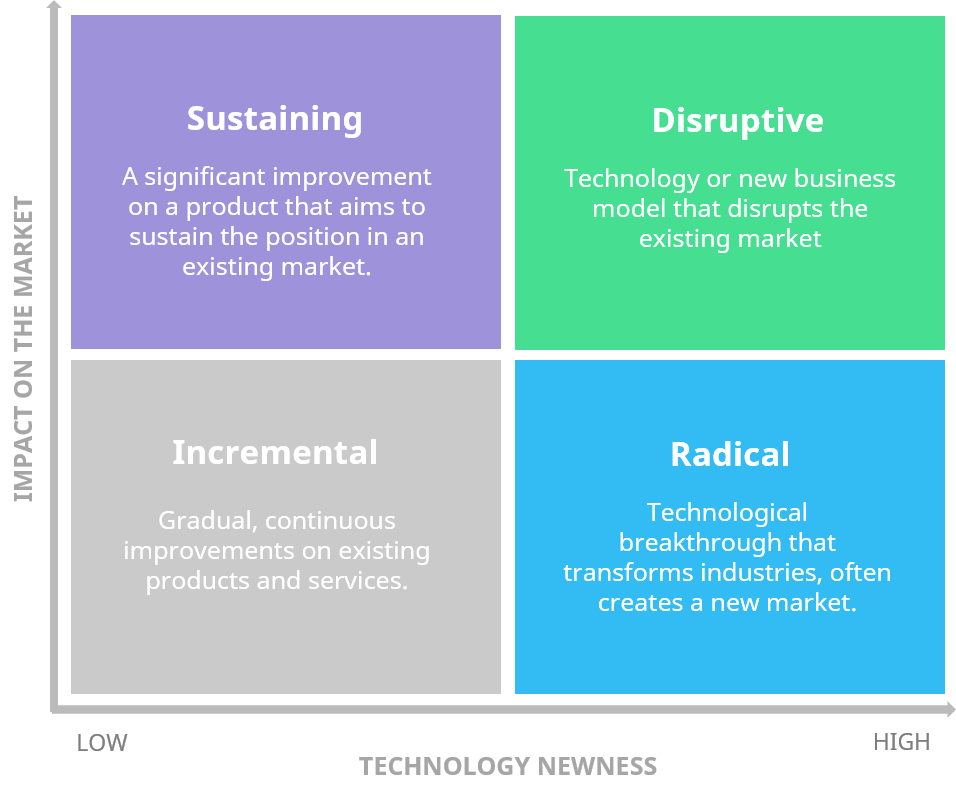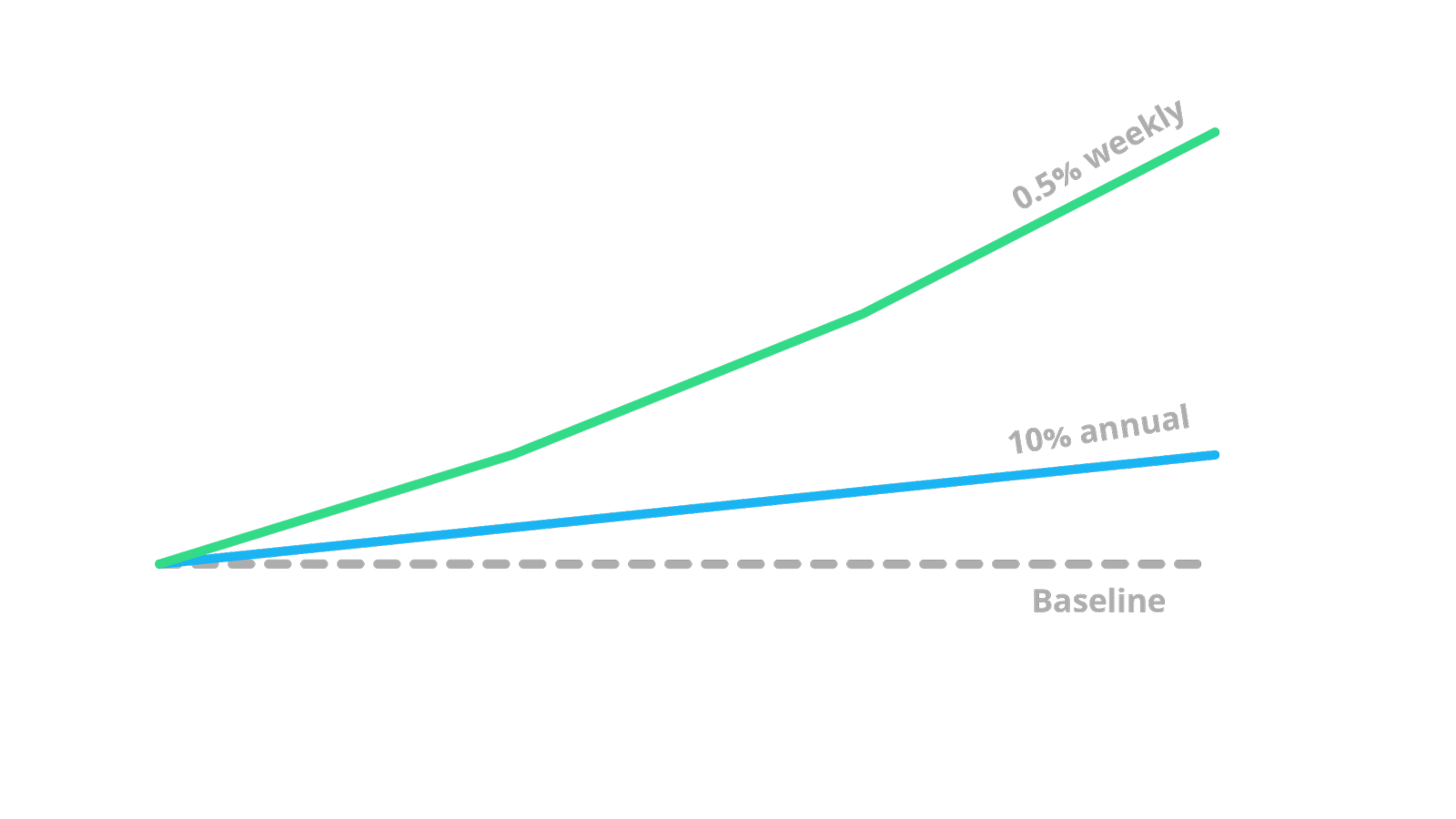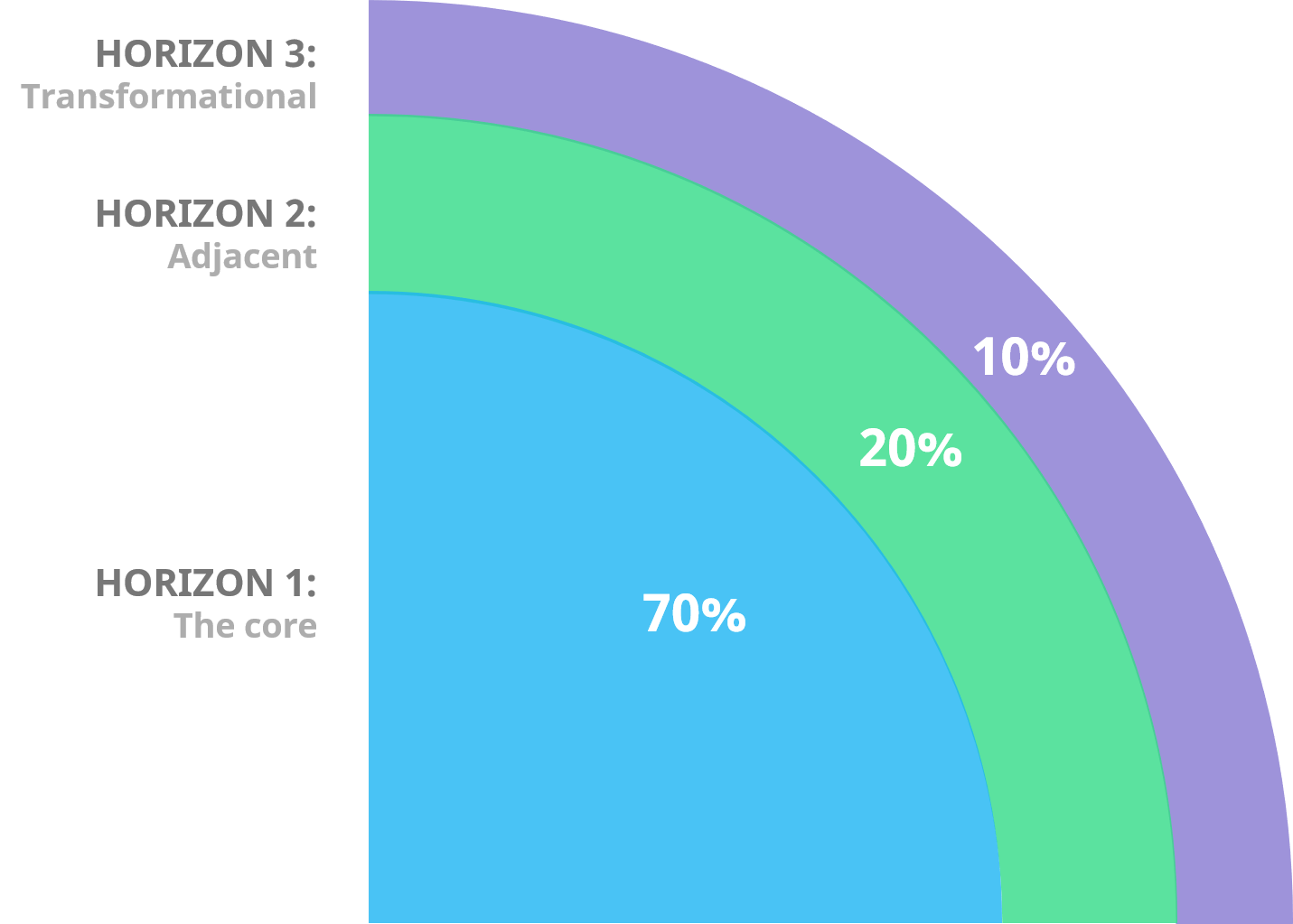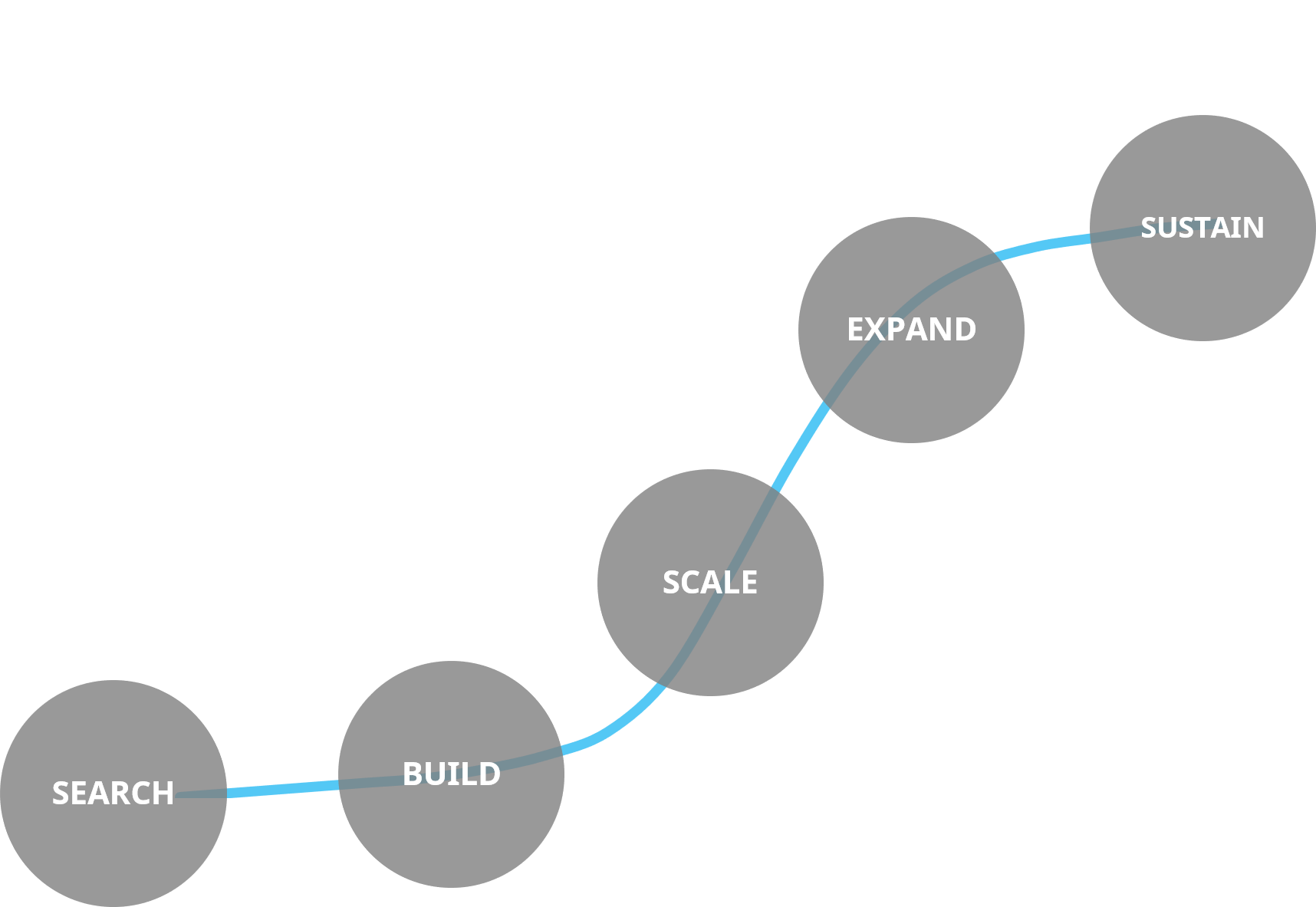Incremental Innovation – The What, Why, and How
When people, and especially the press, talk about innovation, they usually refer to disruptive, and often technology-based, kinds of innovations.
However, those are only a small part of the innovation puzzle. In fact, most of the innovation happening in companies across industries is much more mundane and incremental in nature.
In our experience, incremental innovation is always a big factor behind the most successful companies we’ve seen, even when their success might have originated from disruptive innovation.

Given that importance, it’s crucial to understand what incremental innovation is, how it works, when to focus on it and when not to. We’ll seek to answer all of these questions in this article and also provide you with practical tips on how best to utilize incremental innovation in your organization.
Table of contents
What is incremental innovation?
To begin, let’s take a step back and look at what incremental innovation actually is and how we can define it.
In essence, incremental innovation is the process of making minor improvements to existing products, services, processes, methods, or even the organization itself.
As long as a change creates value and has some element of novelty to it, it can be classified as incremental innovation. Thus, it’s quite safe to say that pretty much every organization does at least some incremental innovation.
Compared to radical or disruptive innovations, Incremental innovations don’t require big leaps in technology and don’t usually have much impact on the market dynamics.
On the other hand, incremental innovations are typically much quicker and easier to implement than other types of innovations, and there’s also significantly less uncertainty involved, which makes them much more predictable, and thus safer for the organization to bet on.

Why is incremental innovation important?
A single incremental innovation isn’t usually all that exciting, which is why incremental innovation often gets a bad reputation. Some won’t even consider it to be “real innovation”.
However, when you combine the effect of making hundreds or thousands of these incremental changes every year, the difference is profound.
Just like compound interest in investing, the effects of incremental innovation stack up, which can lead to a tremendous difference in performance over time.
 And unlike in personal finance, where the initial principal is typically quite small for most people, most companies are already operating at a scale where the effects start to have a meaningful contribution in months or years, as opposed to decades.
And unlike in personal finance, where the initial principal is typically quite small for most people, most companies are already operating at a scale where the effects start to have a meaningful contribution in months or years, as opposed to decades.
The faster you’re able to introduce new innovations, even if they wouldn’t individually be as big, the bigger the difference, as you can see from the chart above. This is a topic that we’ll get back to later in the post.
When to focus on incremental innovation?
As we discussed earlier, pretty much every organization does at least some incremental innovation, which simply makes sense.
Not innovating or improving is a guaranteed way to lose any competitive advantage you may have.
Thus, the real question isn’t so much if you should do incremental innovation, but instead how much effort to focus on incremental as opposed to the other types of innovations.
In deciding this, there are two key considerations:
- Scale
- Maturity
Scale
As mentioned before, the bigger your scale of operations, the more financial sense it makes to do incremental innovation.
Let’s take an example: you invest a week’s worth of work on a simple process innovation that automates 5 minutes of work from your employees every day. For simplicity, let’s assume every employee is paid the same.
If you have 10 employees that are affected by that improvement, that investment pays itself back in roughly 10 weeks. While the result isn’t spectacular, this could still be a reasonable thing to do if the employee creating the innovation doesn’t have other tasks where they could create more value.
However, with 1000 employees, the investment pays itself back in less than half a day. In this case, the investment is an absolute no-brainer.
Thus, the bigger your scale, the more it makes sense to invest in incremental innovation.
Maturity
Maturity can mean a lot of things, but here we’re specifically referring to the maturity of a specific part of your business.
Whenever you launch a new product, service, or business, there are always a lot of hypotheses and unanswered questions. That means that there are likely at least a few significant changes that you have to make to the product or service, the business model behind them, or the way they are delivered, before you’ll be able to succeed.
At that point, incremental improvement isn’t necessarily the best way to go. Because you aren’t successful and at scale yet, incremental changes are unlikely to move the needle much and any time spent on them is away from solving the aforementioned big challenges in the business.
What’s more, even if they did move the needle, there’s still a relatively large probability of the product, service, or business model changing in a way that could ultimately make all of those incremental improvements redundant.
On the other hand, once you’ve gotten all of the big things right, incremental improvement is one of the levers you can pull to further scale your impact.
The lifecycle of an innovation
If you’re a regular reader, you’ve probably heard us refer to Google’s 70-20-10 framework for innovation on more than one occasion.

In practice, the idea is that you should spend 70% of your resources on incremental innovation of your core business, 20% on innovation that helps expand that core and 10% on the more transformational kind of innovation that helps you create new businesses.
Those figures are usually a solid starting point for most existing organizations but shouldn’t be considered as a fixed rule.
In fact, if we refer to the two factors mentioned above, it’s quite easy to see how every new business, innovation and product actually go through distinct phases during their lifecycle where the investment focus shifts dramatically as they progress on that path.

The key is to identify where you are on that path and then focus on the right kind of innovation for that specific phase. For the sustain stage where most organizations actually are and spend the most time in, it’s to focus primarily on incremental innovation, while still having those longer-term projects for building the future growth of the organization.
Examples of incremental innovation
Incremental innovation is everywhere. Once you start looking, you’ll see just how common it actually is.
We’re all familiar with the incremental innovations and improvements that we get to the applications on our phones and computers in the form of software updates, as well as the similarly minor spec updates we see in electronics every year.
However, what might be less obvious for many are the improvement that companies are making internally. Here are a few examples.
1. Product and service improvements
Large consumer services companies might often have tons of support requests, or even customer complaints.
For them, it certainly makes sense to take a look at those requests and complaints and try to do incremental changes to your products and services to try to proactively prevent those complaints and requests from happening in the first place.
These kinds of improvement could range from anything like better instructions to better quality materials and redesigned user interfaces.
2. Process automation
Let’s consider an organization that has a lot of information intensive back office processes, for example internal and external reporting.
For them, automating some of the processes that take the most time would save significant chunks of both time and money, and free those resources for actually creating value instead of pushing papers.
With the rise of Robotic Process Automation (RPA), more advanced AI systems, and features like Viima's Workflow Automation, there are more and more opportunities for eliminating tedious, time-consuming tasks while simultaneously reducing the number of mistakes and errors that occur due to human error.
3. Minimizing waste
For a large-scale manufacturer or retailer, waste is often a big deal.
When the volumes are high but margins low, even small changes in the amount of waste in their processes can make a huge impact on the bottom-line.
There are a lot of options that companies may do in this area.

For example, better demand forecasting and automated replenishment software can help companies minimize spoilage and overproduction.
In addition, manufacturers and producers may sell defective products as second-class items with a discount or recycle some of the materials that would otherwise go to waste throughout the process.
4. Internal process and tool improvement
For a B2B business, sales can often be a significant bottleneck. Thus, even small improvements in sales rep productivity and effectiveness can help accelerate the growth rate of the business dramatically.
There are many levers to pull here as well. Better materials, more convenient tools, as well as continued training and benchmarking all typically help with sales productivity.
If you’re looking for a more extensive list of examples for inspiration, you might want to refer a recent article where I’ve shared 35 different ways for using idea management software. Most of these are actually focused on incremental innovation.
Best practices and tips for getting started
By now you should have a pretty good idea of whether incremental innovation is for you, or not.
Before we wrap up, let’s go through a few best practices and tips for getting started that we’ve found to be useful for many of our customers.
1. Identifying the most likely targets of innovation
With incremental innovation, there are usually so many different things you could work on that the first thing you should try to do is to get a good grasp of where to start.
Most incremental changes are, by nature, relatively quick and easy to implement. There are obviously significant differences, but those usually pale in comparison to the amount of value you can create with the different changes.
Thus, it’s usually better to focus on the value side of the equation when you’re evaluating ideas for incremental innovation.
An easy and effective way for doing that is to take a look at the biggest challenges and bottlenecks your organization or business currently has. The examples I provided in the last chapter can serve as a starting point but aren’t obviously going to apply for everyone.

2. Move fast and aim for measurable quick wins
As with any kind of change you’re trying to make, making a good first impression goes a long way in trying to get the support of your organization for the initiative.
So, if you’re serious about investing in incremental innovation, it’s crucial to move fast and get quick wins by focusing on the targets we discussed in the last point.
If you are able to create measurable positive results fast, it’s easy for everyone to see that the organization is serious, which helps in getting the front lines to buy in, as well as secure additional investment and the backing of management and owners.
On the other hand, if it takes a long time for you to get your bearings or to start getting measurable results, you’re bound to see more and more skepticism and criticism rise around the organization.
3. Build a continuous stream of innovation with the right processes
Once you’ve gotten off the ground and have started to win over the support of your organization for the importance of incremental innovation, the next step is to systematize the work by creating predictable pipelines for incremental innovation.
To succeed in that, a medium or large organization can’t just have a single centralized process for all of these improvements. That will simply be too slow and become a bottleneck in itself. Thus, each business unit, department, or whatever organization structure you have, has to ultimately be responsible for their own incremental innovation work.

It’s obviously important to share tools, experiences and best practices between these units so as to learn as fast as possible and to not create silos as we’ve often seen a number of incremental innovations be beneficial in different parts of the same organization.
However, it is the role of the innovation unit, or individual innovation champions, to communicate the importance of that work, help others get better, as well as make sure that incremental innovation becomes a part of everyday work.
4. Accelerate the pace of change
Last but not least, every organization that is serious about innovation, be it the more incremental or disruptive kind, must be focused on constantly accelerating and pushing the pace of change.
As I mentioned before, the difference in rate of improvement between an organization that innovates on a weekly, or even daily, basis is tremendous compared to an organization that innovates on an annual basis. This is why pace of innovation is the ultimate competitive advantage.
Accelerating the pace of change is obviously simple on paper, but much harder in practice.
This typically means activities such as removing the bottlenecks within the organization usually means practices such as educating others, providing people with the right tools and the training to best use them, removing unnecessary bureaucracy and middlemen from processes etc.

In essence, supercharging the innovation process itself with incremental improvements!
Conclusion
Incremental innovation isn’t exciting or glamorous. For the most part, it’s actually pretty boring work and not everyone will be excited to work on it.
So, if you’re in a less rapidly moving industry, it might be tempting for you and your organization to just jog along and do everything the same way it was done yesterday.
However, just like deliberate practice for individual improvement, incremental innovation is how your organization can become slightly better every day, as long as you take a very deliberate and focused approach to it.
If you do decide to adopt this approach and really invest on incremental innovation at scale, it might occasionally look like you’ve made no real progress in any given month. However, once you look back in 12 or 24 months, the difference is night and day.
If you’re looking to understand the different types of innovation better, you might be interested in our guide on the topic. It will not only explain all of the different ones out there, but also help you choose which ones to focus on at any given point.





